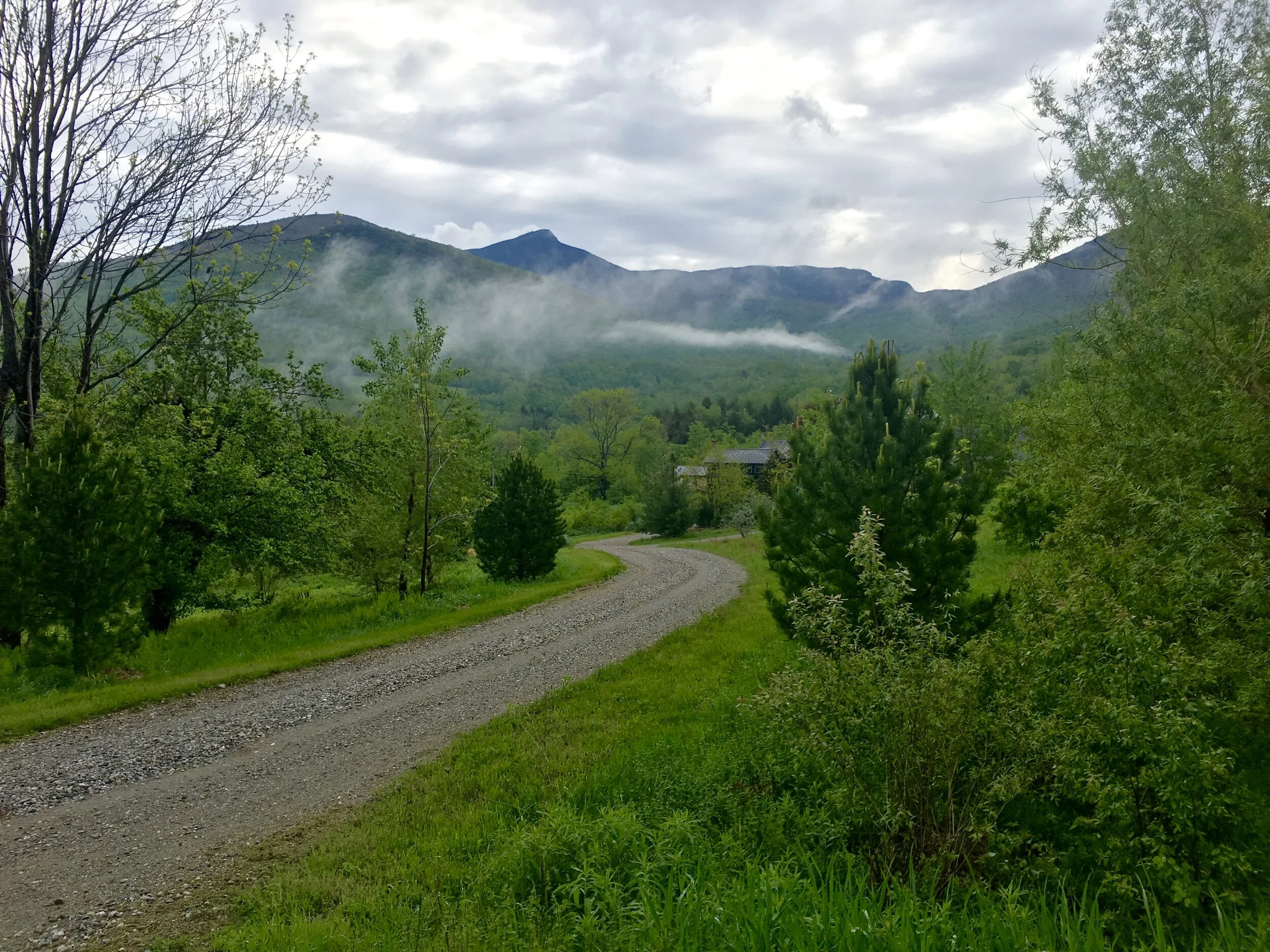Transforming Vermont's Farm Economy: Notes from the Land of Milk, Meat, & Maple
Notes about PLACE, Huntington, Vermont
We live in the woods and mountains and river bottom fields of rural Vermont. And as Vermont’s agricultural heritage is varied, it has traditionally centered around the 3 M’s…Milk, Meat, and Maple.
That pretty much describes our village hamlet at the foot of Camels Hump mountain, where seasonal hikers come to enjoy the public trailheads that lead to its peak, which offers clear-day views to 4 states! Vermont is 80% forested, and we’re starting to see new approaches to forestry that move from timber extraction to carbon, soil, water, and wildlife conservation, and even forest farming, where the forest is cultivated and managed for medicinal and culinary fungi, wildlife and edible plants (all a big part of our own management plan).
Eventually and now, maple trees will struggle to adapt to severe climate disruption and acid rain deposition. Dairy is a dying industry in the State, with larger consolidated confinement dairies seemingly the most "successful" in our current debt-driven economy. Concerns with the industry’s conventional fertilizer, slurry, and atrazine use in our communities and valley watersheds prompt fervent discussions around ecosystem and human health.
There are at least five neighboring farms close to our own, the largest of which is a mid-sized dairy and maple farm. So while our PLACE expresses some of these iconic Vermont practices and all the visual postcard cues that go with them, ours is a landscape in transition, both in an economic and in a biological sense. Under pressure to expand, our neighboring dairy has planted more corn (now 150 acres in all), which has drawn more bears from the State forests surrounding us to feed on it. Thus, more bears are being killed in defense of corn in our neighborhood—10 bears in 2018 alone. Larger rain events are washing out forest roads and riverside fields. Our rural economy is struggling as young adults move out of state and our resident population ages.
Talented and energetic people seeking a simpler life with the land wish to give their talents to the community and root their work here, but how can they survive? There is great community support for those that make their living on the land, but economic pressures such as crippling property taxes, low-paying jobs, make it difficult to do so. So while the land blesses its many recreational visitors with breathless, iconic beauty, there are local cultural shifts, economic struggles, and ideological flashpoints roiling under the surface here.
How to transition away from an extractive economy as our climate collapses in front of our eyes? How to structure food systems that can withstand climatic AND economic flux? How to make life on the land possible in these shifting times? Our town's one general store next to the post office used to support a deli that traded in burgers, fries, and onion rings. There are two bakeries in our town…one that makes pies and cookies, and another that bakes whole-grain fermented breads. There’s an organic greenhouse operation, a small seasonal farmstand that curates products from nearby, and a thriving wholesale organic vegetable farm that offers a winter CSA. We are, in part, an agrarian community in transition.
Being stewards of this land for over 17 years, and as new landowners barreling into the local neighborhood with lots of bravado and a BIG VISION for ecology, green building, and renewable energy back in 2003, we’ve garnered a lot of support, sparked the local economy, and also attracted some strange resentments that seem more cultural than personal—yet persist to this day.
Perceived by our community as ‘wealthy’ (therefore, by association automatically ‘entitled’) stimulated some pretty interesting gossip and uninformed assumptions. But what some of these dynamics have taught us over the years is the necessity for deeply questioning the economic model that governs philanthropic works, wealth-generation, re-examining the way healthy food, soil, water and right livelihood can actually work to amend the divide between the ‘haves’ and ‘have-nots.’ Within an older economic model, the ‘haves’ can certainly give to the ‘have-nots’ via charity and good works, but doing so won’t necessarily change the underlying economic structures that have led us to this precarious place of ecological collapse or this cultural divide.
More an inquiry than a set of conclusions, the dialogue of land, economy, livelihood, health and food all coalesce here. Most evident is the need to move capital into establishing durable and ethical food systems that bring land into a meaningful and functional relationship with all the communities, wild and human, that make life possible.
